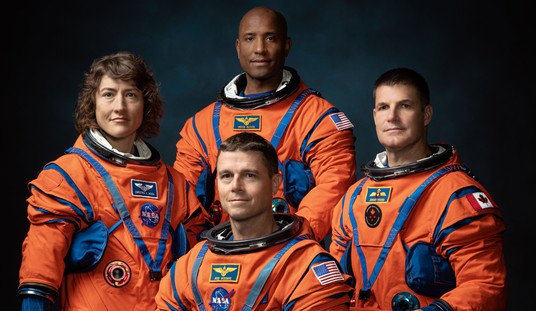Let's go for a quiet soundtrack this week.
This is really spectacular. This is something we literally can't see with the naked eye — it has light far below what the eye can register. I suspect it couldn't be done with film, either — there's something called "reciprocity failure" that makes film get less and less sensitive as the exposure gets longer. But done digitally, we can see things like this.
After spending the last few months capturing it, I'm thrilled to share with you my newest artwork, my deepest look at the milky way yet. A 140 hour exposure, revealing the chaos happening in our skies. I call it "Above the Rift". Here's a short thread about what you're seeing. pic.twitter.com/eke3esm8tl
— Andrew McCarthy (@AJamesMcCarthy) July 24, 2025
Follow the link; there's a whole thread and a link to his sale site. I wish I could afford the big one.
There's also a downloadable annotation version that tells you where everything is.
This is 337 megapixels by the way. An annotated full size download is available on my website (check my bio) for free if you want to peep it.
— Andrew McCarthy (@AJamesMcCarthy) July 24, 2025
The download is annotated as a companion to the fine art prints, so you can tell people all about your cool new art piece! https://t.co/VFm17dRxfp pic.twitter.com/xwfggfn65K
Remember, make sure you get out and see a total eclipse before they're gone.
The Moon is receding from Earth at 3.8 cm per year.
— ToughSF (@ToughSf) July 24, 2025
The Earth is drifting away from the Sun at 1.5 cm/year.
The Sun is expanding over time too.
The perfect alignment that gives us our current eclipses is a unique convergence in time and will be gone in the future. pic.twitter.com/q7Wq28jr5b
Still, there's this:
Here is the filament eruption in GONG H-alpha images: note the N-S (vertical) dark filament just past the central meridian disappear (erupt). The CME is en route and will very likely hit us. The expected arrival is some time on July 27th (Sunday). It may produce a minor (to… https://t.co/vxggspgLCJ pic.twitter.com/sk1tEUrH1G
— Jure Atanackov (@JAtanackov) July 25, 2025
And this.
It waited for the sun to set but the tree got there first ... pic.twitter.com/fxZU4HmyEd
— The Figen (@TheFigen_) July 20, 2025
A cool comparison.
Sizes of the worlds in our system pic.twitter.com/eZByuzx1qo
— Black Hole (@konstructivizm) July 25, 2025
Less than 20 years from this...
TODAY is the 75th anniversary of the first ever rocket launch from Cape Canaveral!🚀
— Andy Saunders - Apollo Remastered (@AndySaunders_1) July 24, 2025
Seen here on July 24, 1950, Bumper 8 was based on a German V-2 missile.
Less than 400ft away, the photographers were knocked to the ground - well they'd never witnessed a rocket launch before 1/2 pic.twitter.com/BBviM9uEyZ
...to this. In thousands of years, people (from whatever planet) are going to look at this, and it's still going to be there.
When Neil Armstrong stepped onto the surface of the Moon in 1969 and said the famous words, "That's one small step for \[a] man, one giant leap for mankind," he left behind more than just a mark in history — he left a footprint that’s still there today.
— Black Hole (@konstructivizm) July 25, 2025
The Moon has no… pic.twitter.com/3ROZRsmev8
And came home.
#OTD in 1969 🌊
— NASA Artemis (@NASAArtemis) July 24, 2025
Apollo 11 astronauts Neil Armstrong, Buzz Aldrin, and Michael Collins splashed down in the Pacific Ocean, completing the first mission to land humans on the Moon. Their eight-day journey changed history and sparked a legacy of exploration that lives on today. pic.twitter.com/tzaJ5IvEoA
Now some pretties.
From orbit, star trails streak the lights of cities at night and stamp lightning flashes into the time history, pulling spectacular colors from the darkness of space. pic.twitter.com/ENcNQJmAWR
— Don Pettit (@astro_Pettit) July 24, 2025
We didn't know this, even though people have been looking at Betelgeuse for thousands of years.
Our first image of Betelgeuse's companion star revealed ⭐
— NASA Ames (@NASAAmes) July 23, 2025
This is NASA's discovery of a close-orbiting star to Betelgeuse, the 10th brightest star in our night sky. A @nasaames scientist confirmed the century-old hypothesis by using one of the largest ground-based telescopes… pic.twitter.com/foFO0jQcJE
A spiral in the snake 🐍
— Hubble (@NASAHubble) July 25, 2025
Located within the constellation Hydra (the Water Snake), the galaxy NGC 3285B shines from 137 million light-years away.
It belongs to the Hydra I cluster, which is one of the largest galaxy clusters in the nearby universe: https://t.co/tVLyIFRBB3 pic.twitter.com/twq34zlPrw
I've had a stomach flu the last couple of days, so this seemed like a pertinent, if not appropriate, way to end Sky Candy for the week.
Uranus is warmer than we thought.
— NASA (@NASA) July 22, 2025
New computer modeling techniques revealed that Uranus generates internal heat. This is similar to our solar system’s other gas giants, like Jupiter or Neptune. https://t.co/OpsOIwXYc9 pic.twitter.com/ffwnZqSjNP
As always, thanks for the comments. Feel free to share this. And don't forget my Substack, The Stars Our Destination. See you next week.`










